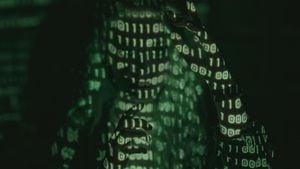Message in bottles have always carried an air of mystery, and recently, two remarkable discoveries reignited our fascination with this form of communication across time and space. From Florida to New Jersey, finds from different eras demonstrate the emotional and historical connections such messages can evoke.
During the Fourth of July weekend, Amy Smyth Murphy, 49, made headlines after unearthing what could potentially be the oldest message in a bottle ever found. On the beach at Corson’s Inlet State Park, she discovered a green-colored bottle with papers inside, sealed tightly with a cork.
With eager anticipation, she took the bottle back to her beach house where she was greeted by an overwhelming smell described as “the bay smell times one million.” Although the aroma was intense, her curiosity drove her to explore what lay within the bottle.
Upon opening the bottle, Smyth Murphy pulled out papers dating back to 1876, including what seems to be a business card and handwritten note. If verifiable, her find would predate the current record holder by ten years, making it the oldest message found at sea.
Previous record holder, found by Australian couple Tonya and Kym Illman, was dated 1886 and came from the captain of the German ship Paula. Smyth Murphy is now eagerly working to get her discovery recognized by Guinness World Records, but this could take several months.
On the other side of the country, Suzanne Flament-Smith stumbled upon another extraordinary message after Hurricane Debby swept through Tampa. While cleaning up debris along Bayshore Boulevard, she noticed among the plastic waste, a glass bottle with visible writing inside.
Feeling compelled to investigate, she retrieved the bottle, only to find inside not only shells and sand but also items like a bullet casing and even a mini cannonball. Among these treasures was a surprise note dated from World War II, offering glimpses of friendship between individuals named Lee and Chris.
The handwritten note opened with friendly words, “Dear Lee, received your letter yesterday, was glad to hear from you.” It detailed sentiments of longing between friends during tumultuous times, including hints at their connection to the Amphibious Training Base of Little Creek, Virginia.
Flament-Smith expressed her excitement, noting the vibe of friendship and nostalgia the letter conveyed. “It appeared to be a Navy military to a friend of some sort because it mentioned how he wants to see him soon,” Flament-Smith remarked.
The amphibious training base where the message originated is now known as the Joint Expeditionary Base Little Creek-Fort. Flament-Smith plans to pursue the mystery surrounding the letter and hopes to trace its lineage, believing there is still much history to unearth.
These two gripping accounts serve as reminders of the connections we share, even across time. Each bottle holds the potential for stories, memories, and emotions from those who came before us.
While Smyth Murphy’s and Flament-Smith’s discoveries could revolutionize our current understandings of such artifacts, they also stir the imagination with the endless question—who might have penned these messages, and what were their lives like?
These discoveries demonstrate how objects like these missives offer much more than mere communication; they become vessels of personal history and collective memory. They connect us to the past, showcasing just how timeless human feelings truly are.
With each message found, be it the oldest or one filled with nostalgia, the allure of the unknown keeps us engaged. What other secrets lie under the waves or hidden within shorelines, waiting for someone to come across them and breathe life back to forgotten messages?



